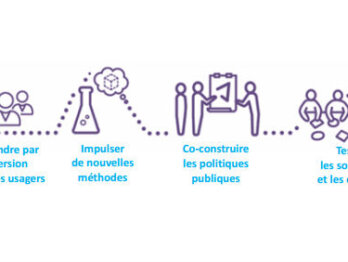Innovation for its own sake

Have you ever heard the warnings “we shouldn’t innovate for the sake of it” and “innovation isn’t an end in itself”? In this somewhat contrarian post I’d like to suggest a different perspective, one that argues that innovation for its own sake is both: a) quite uncommon, as innovation usually serves a number of purposes, even if they are not always explicit; and b) not something to worry about even when/if it does happen, and may even be a good thing.
Why do we innovate?
My first proposition then, is that innovation for its own sake is actually quite rare, simply because it is not that easy to achieve. Why do I suggest this?
To answer this it is necessary to look at the varied motivations for why people and organisations do innovate. What are the possible reasons for why innovation is undertaken? The following categories are those that I have come across or identified:
- Problem solving: the most common reason is in order to create options for solving a problem where existing or previously tried solutions are no longer considered sufficient or satisfactory. This is a very practical reason, and I’d argue, the one most reflected in the public sector, where capacity constraints (political as much as resources) mean that the effort involved with innovation is often limited to where it is clearly invited. An example problem might be “how can we reduce greenhouse gas emissions?”
- Variety: a second common reason is in order to increase the variety and range of options that are available. This is more than simple problem solving, it is looking not only for a solution, but a solution that meets a range of potentially non-critical criteria. This is again an important consideration for the public sector, where there may often be a political need for a range of options beyond those existing or first identified. Here an expanded problem statement might be “how can we reduce greenhouse gas emissions without reducing economic growth or increasing government expenditure?” While it is still a matter or problem solving, it is also as much about finding more varied (and more palatable) options.
- Demand driven: sometimes innovation is about responding to an unmet demand. This could be seen as simply another form of problem solving, except that there is the question of “a problem for whom?” An organisation may not experience a problem or see a problem as either urgent or pertinent, but in the public sector there are times when an organisation may still have to respond for political reasons. In this situation, an example reason for undertaking innovation might be “we believe climate change is manageable, however there is a political demand or directive that we do more to combat it.” The problem might objectively be the same, but the reasons for innovating and responding to it are very different.
- Exploratory: a further reason for innovation will be about exploring what is possible, about playing with new ways of thinking or doing and learning about how they might be useful, or trying something just because they can or to push the boundaries of their knowledge. This isn’t so much about problem solving; instead it is about the creative exploration of new possibilities. These possibilities may in turn help with the realisation that there are new problems or new ways of responding to problems, but they are not usually about solving problems to begin with. This sort of innovation is perhaps less often seen in the contemporary public sector where there is a focus on responding to existing problems. This type of innovation might be typified by thinking such as “I wonder what would happen if …?” This could be argued as being a form of innovating as an end in itself, though it may also meet real needs for discovery, for play, for creativity, or for autonomy.
- Aspirational: sometimes there may be an aspiration or ambition that is so grand or audacious that the very expressing of it calls for and inspires innovation. The ambition itself isn’t a problem to be solved, or a demand to be met, but a call to action that can inspire people and organisations to work together in new and different ways in order to collaboratively reach a desired goal – whether it be putting a man on the moon or seeking to decarbonise an entire country’s energy system. Yes there will be lots of sub-problems, demands and exploration that might take place under this ambition, but the innovations are collectively driven by something bigger than these sub-elements.
- Capacity building: other times the innovation process or initiative may not be about the immediate result. Rather it might be about building innovation capacity in order to simply encourage and enable future, more sophisticated innovation. In this sense, the innovation might be seen as a form of strength-building for building the innovation muscles – until the basics are there, there can be no hope of tackling the really big innovation challenges. For instance it might be about starting out a team with a smaller problem, to help them learn how to collaborate and use new tools, before setting them on a bigger and more challenging problem that is expected to require a higher and more sophisticated level of innovation. Or it may be about building community capabilities in innovation, so that others are slowly empowered to be able to tackle their own challenges. This reason for innovation is likely to be less common than some other reasons, but it can be an important aim from an organisational or system perspective.
- Engagement: in other situations innovation might be a process that is undertaken in order to convince others, to help them understand that there are other possibilities that might exist. Those initiating the innovation process may even have a clear sense of what they expect the likely outcome to be, but for whatever reason, might need to bring others along on the innovation journey. In such an instance, it might be about using different methods or techniques to help expose people to new or different insights that allow the current state to be seen in new ways.
- Subversion/Disruption: there may also be times where innovation is simply being undertaken for the purposes of subverting or disrupting the status quo. This is likely to be one of the riskiest or most malignant forms of innovation, but there may be times where there is a desire to simply upset the apple cart, to shake things up in order to see if something better might not emerge. In such a situation, there may not be a clearly articulated or even understood problem, or even a sense of what is trying to be achieved, other than just to disrupt what is in the belief that anything that results will be better somehow.
- Preparatory: related to disruption, sometimes innovation will be looked to as a means of trying to prepare for or anticipate change. There may be an expectation that things will change in the future, and so innovation may be seen as a needed form of attempted insurance. An example might be of a regulatory agency faced with a pipeline of disruptive technologies, not knowing what’s going to happen, but worried that it cannot wait to react and so needs to start innovating in some way to engage with these potential shifts.
- Copying others/Following the trend: while not always easy to distinguish from the previous reason or from exploration, there will be times when organisations or individuals seek to innovate, simply because others are. While this may have a feel of being for “the sake of it”, it can often actually be an important force for public sector organisations that do not experience the same competitive pressures as private firms. While the motivation may not be pure, the end result can still be helpful in engendering learning across the system (though it is by no means a guaranteed feature).
- Showing off/Fear of missing out: Finally, there can be times where people will advocate undertaking an innovative project or using a new method in order to simply be seen as “innovative” or to counter a fear of missing out. This is what I would regard as the most common case of what someone means when they say “for the sake of it”.
So there are many reasons for why people may engage with innovation (and of course innovation can sometimes be an accidental rather than deliberate process). Of those I would suggest that there are three where “for its own sake” is a risk. Yet often an innovation process will be undertaken for multiple reasons, meaning that the chance of anyone deliberately starting an innovation process for no other reason than for the purpose of innovating is actually not that easy a thing to achieve.
Still – maybe I’m wrong, and innovation for its own sake is a common issue. In that case, we then need to ask “does it matter?”
What is meant by “for the sake of it”?
To answer the question of whether it matters, we can look at a number of aspects of innovating for the sake of it, such as the possible consequences, the feared risks, the public sector context, and the nature of operating in a fast changing world.
Firstly, as with subversion, it is important to note that “for the sake of it” may not be the most admirable reason for undertaking innovation, and thus there may be risks associated with approaching innovation in this way. For instance, someone simply undertaking an innovative project for the purposes of signalling certain behaviours (“I’m innovative”) may not be guided by the right reasons and the initiative may consequently have a higher chance of failing, which in turn could jeopardise further, more needed opportunities for innovation. On the other hand, “trying out” innovation may lead people down the path to developing a more sophisticated appreciation of innovation, and a richer understanding of how innovation may be practically used. Either way, there is no guarantee that innovation for the sake of it will be a good or a bad thing. (Something that is equally true for any of the other reasons, including problem solving – innovation can just as readily make things worse as it can improve things.) So in terms of the up-front consequences of innovating for its own sake, there is likely as much uncertainty as with a well-intentioned innovation process.
Secondly, we should ask what do people mean when they say “for the sake of it” or “innovation isn’t an end in itself”, and what are their concerns underlying this? What are the risks they are actually worried about? Some things that I think are underlying these phrases are:
- You don’t have a clear intent – e.g. it isn’t clear what you are actually trying to achieve from this process.
- You don’t know where this will lead – e.g. you don’t have a clear idea of what will come out of the innovation process.
- We shouldn’t throw the baby out with the bathwater – e.g. there may be good things in what’s being done, and we do not want to lose all of those just in order to fix the bits that are not working.
- Organisations (and people) need some consistency – e.g. if everything is up in the air because of innovation, it can be exhausting and confusing, as nothing is settled and knowing who is responsible for what can be difficult.
- You cannot innovate everywhere all of the time – e.g. no organisation has the resources or capacities to change everything at once, there needs to be some degree of prioritisation and strategic intent.
- We need to learn from what’s already been done – e.g. if you change everything, you will not be able to optimise particular processes over time, or exploit efficiency gains, if everything is going to be continually reinvented.
- Innovation is hard – e.g. innovation involves a lot of difficulties, including being clear about your intent, about what’s a priority, and about what needs to be done (or stopped). We should not try to do something hard unless we really have to.
- There’s danger in outrunning others/being bleeding edge – e.g. innovation that happens too quickly risks an organisation or a team being in front of the background appetite for innovation, which means that anything that comes out of it is unlikely to be accepted or taken-up as people will not be ready for it.
- I don’t want to innovate – e.g. I don’t think things need to change, so I’m going to put the risk/effort burden on you to prove that innovation is needed, rather than justifying why I think things are good enough now and should not have to change.
All of these are valid issues. Yet they are equally also things that I would argue are just as relevant for any of the other reasons that people may have for innovating. Even if there is a very clear and urgent problem with widespread understanding that things need to be done differently, any of those concerns could just as readily be used as a critique. The risks involved in innovation will often be similar, regardless of the underlying motivation. Well intentioned or not, the more relevant questions in relation to risk are likely to do with innovation experience and capability, having a developed and tailored innovation process, and having a clear sense of strategic priorities and contexts.
Thirdly, it is arguable that many (public sector) organisations are often filled with things done for the sake of it. If there’s one thing that large organisations are particularly good at reproducing, it is processes that end up being treated as ends in themselves. It may be an awareness of this characteristic that prompts people to caution against repeating this mistake in the domain of innovation, yet that may be a lesson not suited to innovation. If anything, innovation, a process often involving questioning the status quo and challenging assumptions, can be a force for helping remove existing practices and behaviours that may be done for the sake of it and that have long been disconnected from their original purpose.
Fourthly, in a world of rapid change, where the interplay of multiple forces can mean that even the most reliable things can become unpredictable, maybe innovating for the sake of it is entirely justifiable and warranted. Change for no reason may not be a good idea (though one could argue that for a lot of human activities, such as fashion, change and novelty is actually highly valued and appreciated as an inherent good) but where there are high levels of uncertainty, it is not necessarily going to be a bad idea.
In short, the consequences of innovation for its own sake are not necessarily going to be that different from any other innovation process, and at least engaging with innovation may start people or organisations down a path to a more sophisticated innovation approach driven by higher order motivations.
Go on and give it a try – innovate for the sake of it
In summary, innovation that is done only for the sake of innovation is probably not that easy to achieve, and secondly even where it does happen, it may not be that big a deal, or at least no more so than it is for any other innovation process.
So if you hear someone, or find yourself, saying “innovation is not an end in itself” I’d like you to consider the following:
- Would it be such a terrible thing if it was?
- Most of the underlying capabilities and processes of organisations are not an end in themselves, but that doesn’t mean they aren’t done all the time or that they are not ubiquitous – think accounting, procurement, human relations, IT, strategic planning, project management. Why are they so often treated as different to innovation? (“I don’t think we need accounting in this project, it’ll be fine without it.”)
- Where can you confidently say that innovation is not needed, that things cannot and need not be done better? What if someone said to you “I don’t think we should stick with the status quo just because it is the status quo”? What would your answer be?
What do you think? Is innovation for its own sake a big issue? I’d be glad to hear any thoughts or any responses about why this is the wrong tack to take.
Photo credit: “Why Not” by Peter Reed (2007)










